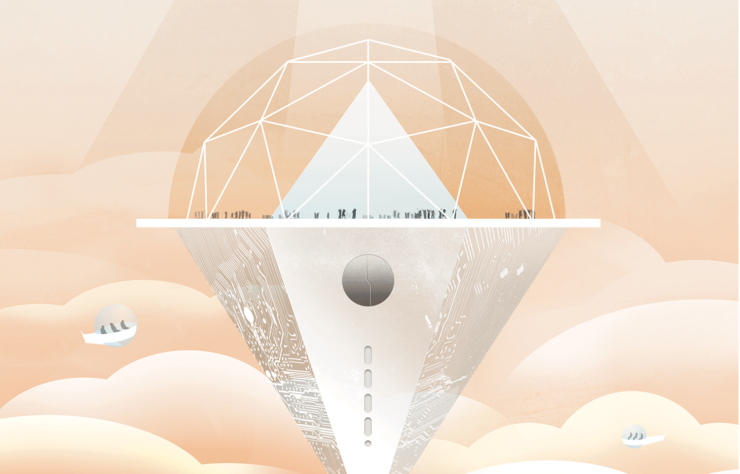Venus is so inconsiderate. It presents itself as a sister world, one that would seem at first glance to be very Earth-like, but… on closer examination it’s utterly hostile to life as we know it. Surface conditions would be extremely challenging for terrestrial life, what with the toxic atmosphere, crushing pressures, and blast-furnace-like temperatures.
That’s at the surface, however. Just fifty kilometers above the surface, there is a region with terrestrial pressures and temperatures, a veritable garden of Eden where an unprotected human would not be almost immediately incinerated but instead would expire painfully (in just a few minutes) due to the lack of free oxygen and the prevalence of toxic gases.
Nonetheless, visionaries like Geoffrey Landis have pointed out the possibility of floating cities high in the Venusian atmosphere, cities that would be bubbles of habitability in an otherwise hostile environment. Thus, the charming poster created for Venusian tourism.
Venus is not the only world where Landis’ balloon cities might be useful. It’s a curious fact about the Solar System that three of the four giant worlds have, thanks to combination of high mass and low density, surface gravities comparable to Earth. Jupiter is the exception. Perhaps a chart would be handy.
| Planet | Surface gravity (m/s/s) | Surface gravity (Earth = 1) | Escape velocity (km/s) | Escape velocity (Earth = 1) |
| Venus | 8.9 | 0.9 | 10.4 | 0.9 |
| Earth | 9.8 | 1.0 | 11.2 | 1 |
| Jupiter | 24.9 | 2.5 | 60.5 | 5.4 |
| Saturn | 10.4 | 1.1 | 36 | 3.2 |
| Uranus | 8.9 | 0.9 | 21.3 | 1.9 |
| Neptune | 11.2 | 1.1 | 23.6 | 2.1 |
Life in the clouds of a gas giant would be even more challenging than life in the clouds of Venus. Venus at least offers a solid surface from which heavy elements can be retrieved. Gas and ice giant settlements would have to settle for the lighter elements that can be sifted out of the atmosphere, or, if necessary, import materials from off-world. Moreover, gas giants generally force one to choose between Earth-like pressures and tolerable temperatures.
It’s hard to imagine why someone would be determined or desperate enough to try to live on Venus, Saturn, Neptune, or worlds like them. Still, it’s good enough for science fiction—here are five examples.
Floating Worlds by Cecilia Holland (1976)
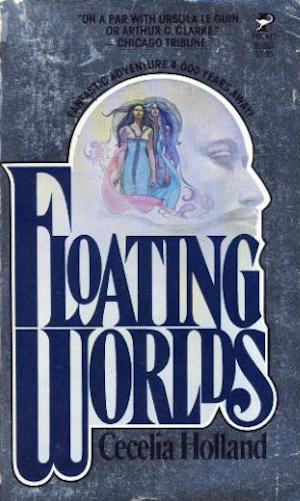
Thanks to Earth’s enlightened anarchists, the mother world is a toxic hellscape where life is confined to domes. Worlds like the Moon, Mars, Venus, and the asteroids are burdened with actual governments, however, and inflict on their citizens higher standards of living. The Outer Planets—Saturn and Uranus—are dismissed as almost as barbarous as Earth, home to floating cities populated by mutant Styths about whom no proper human need ever worry. After all, it’s not as if human history has ever featured warlike nomads crushing one over-confident empire after another…
***
Venus of Dreams by Pamela Sargent (1986)
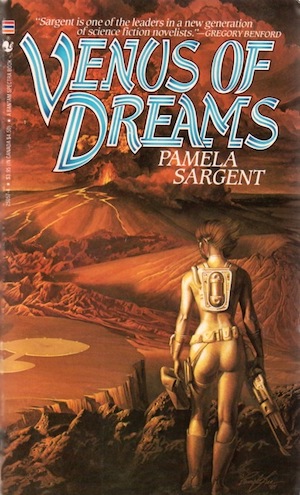
Unified under the Mukhtars’ Nomarchies, Earth has sufficiently recovered from the calamities of the 21st century to consider expanding into space. Most of the desirable real estate is already controlled by the highly advanced Habbers. The Mukhtars therefore cast their eyes on Venus, which with great effort and considerable time could be transformed into a new Earth. Before that comes to pass, however, hard-working terraformers like Iris Angharad must live and work in the Islands, floating high above the inhospitable surface.
***
The Clouds of Saturn by Michael McCollum (1991)
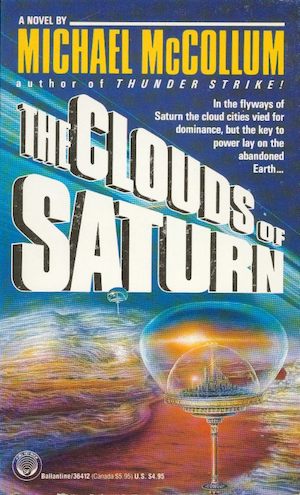
Forced to flee Earth as the brightening Sun transformed Earth from garden planet to searing hell world, humanity found refuge in Saturn’s atmosphere. Once established, the city states of that giant world returned to humanity’s popular pastime, internecine warfare. The obvious solution? Bring every city state on the planet under the firm guidance of a unitary global government—regardless of whether polities want to join and regardless of the cost in human lives.
***
Sultan of the Clouds by Geoffrey Landis (2010)

Space colonization provided the masses with new homelands in which to work endlessly, and made a handful of oligarchs as rich as Croesus. Carlos Fernando Nordwald-Gruenbaum is one such oligarch, a twelve-year-old who owns almost everything worth owning in the clouds of Venus. Almost everything isn’t everything, however. Thus, the boy invites brilliant researcher Dr. Leah Hamakawa to Venus. Dr. Hamakawa is a key element in his bold vision of the Venus that could be. Her infatuated assistant David, not so much, except that the tag-along minion provides a perspective the great and powerful lack.
***
The House of Styx by Derek Künsken (2020)
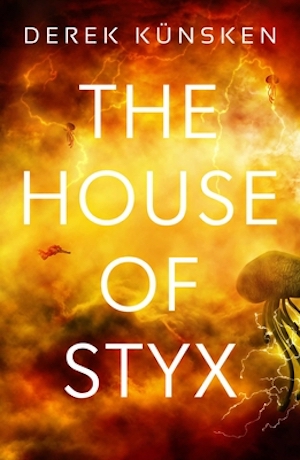
The clouds of Venus promised Quebecois separatists independence, unending hardship, and the ever-present threat of horrific demise. Although la colonie is home to a comparative handful of Venusians, barely enough to qualify for a village, there are enough people to support profound disagreements. Thus, the D’Aquillon family, faced with intolerable medical restrictions imposed by la colonie, elect to live in their own floating habitat, Causapscal-des-Profondeurs. The family has escaped unreasonable laws…but there are costs.
***
No doubt even now you are reaching for your keyboards, annoyed that my five-book list omitted works you believe are better examples. Feel free to populate the comments with suggestions.
Originally published in September 2020.
In the words of Wikipedia editor TexasAndroid, prolific book reviewer and perennial Darwin Award nominee James Davis Nicoll is of “questionable notability.” His work has appeared in Publishers Weekly and Romantic Times as well as on his own websites, James Nicoll Reviews and Young People Read Old SFF (where he is assisted by editor Karen Lofstrom and web person Adrienne L. Travis). He is a four-time finalist for the Best Fan Writer Hugo Award and is surprisingly flammable.










